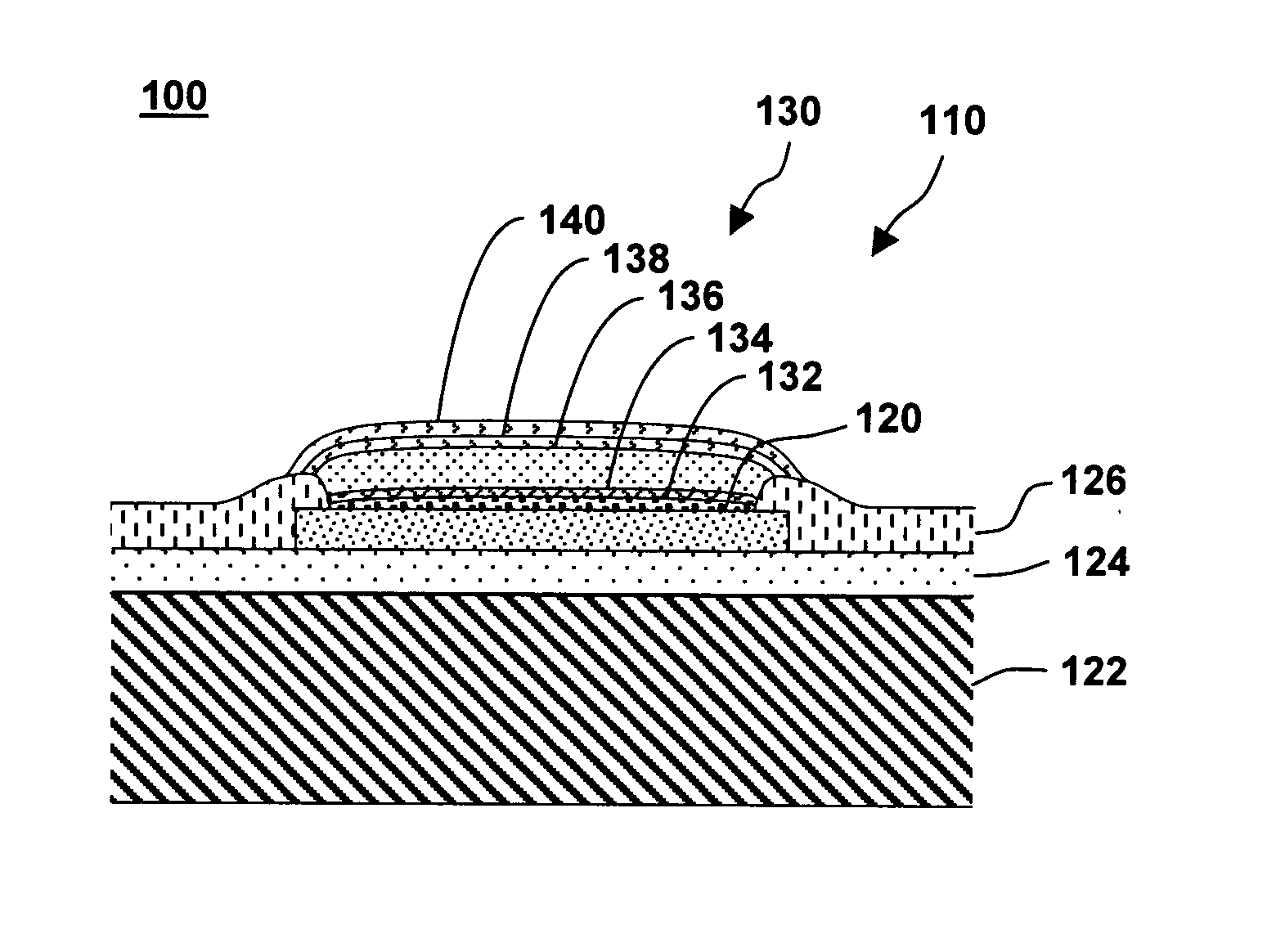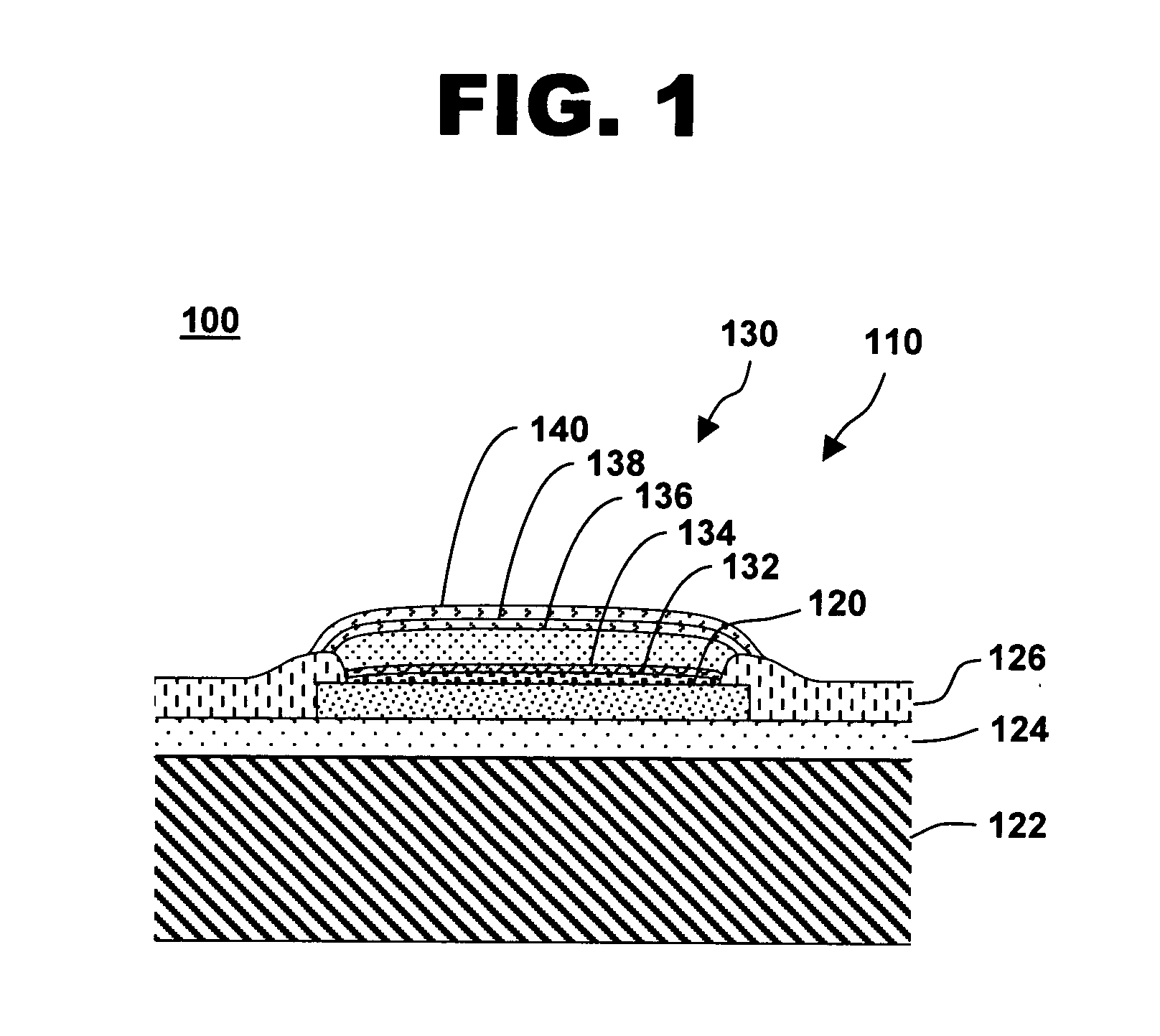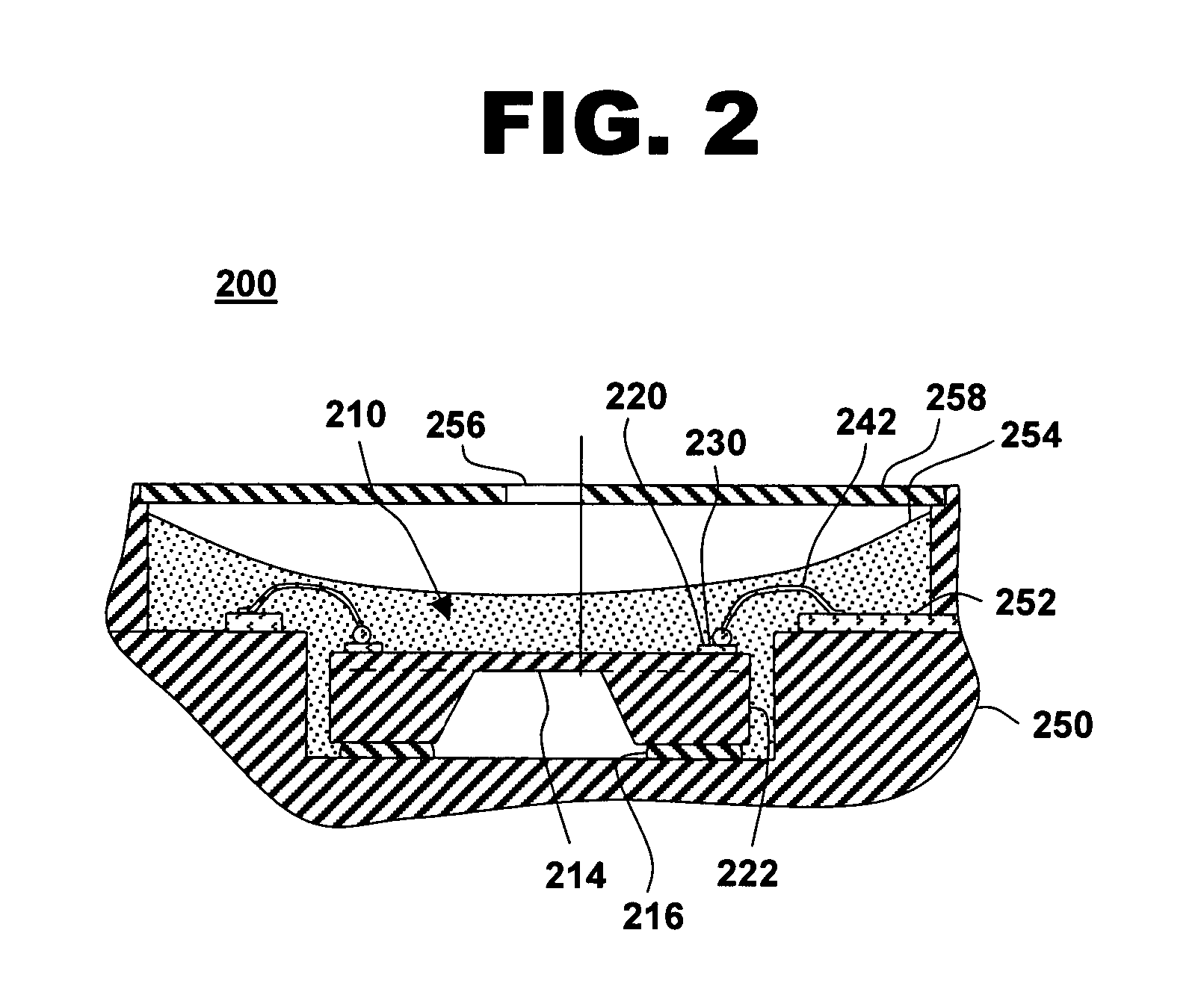Corrosion-resistant copper bond pad and integrated device
a technology of copper bond pad and integrated device, which is applied in the direction of fluid pressure measurement, fluid pressure measurement by electric/magnetic elements, instruments, etc., can solve the problems of aluminum bond pad being susceptible to corrosion under standard environmental test conditions, product failure, performance degradation and other issues
- Summary
- Abstract
- Description
- Claims
- Application Information
AI Technical Summary
Benefits of technology
Problems solved by technology
Method used
Image
Examples
Embodiment Construction
[0024]FIG. 1 shows a cross-sectional cutaway view of a capped copper bond pad on an integrated device, in accordance with one embodiment of the present invention at 100. Capped copper bond pads 130 are typically located on the surface of an integrated device 110. Capped copper bond pads 130 provide for wirebonding and electrical connections between capped copper bond pads 130 and a package or assembly to which integrated device 110 is electrically connected, such as a plastic package, a ceramic package, or a sensor package. Capped copper bond pads 130 can be wirebonded to provide electrical connectivity between integrated device 110 and external power supplies, ground lines, input signals, output signals, data lines, address lines, other integrated devices, external electronic components, and other electrical and electronic devices. Integrated device 110 typically includes a plurality of capped copper bond pads 130. Integrated device 110 with capped copper bond pads 130 may be conta...
PUM
| Property | Measurement | Unit |
|---|---|---|
| thickness | aaaaa | aaaaa |
| thickness | aaaaa | aaaaa |
| thickness | aaaaa | aaaaa |
Abstract
Description
Claims
Application Information
 Login to View More
Login to View More - R&D
- Intellectual Property
- Life Sciences
- Materials
- Tech Scout
- Unparalleled Data Quality
- Higher Quality Content
- 60% Fewer Hallucinations
Browse by: Latest US Patents, China's latest patents, Technical Efficacy Thesaurus, Application Domain, Technology Topic, Popular Technical Reports.
© 2025 PatSnap. All rights reserved.Legal|Privacy policy|Modern Slavery Act Transparency Statement|Sitemap|About US| Contact US: help@patsnap.com



